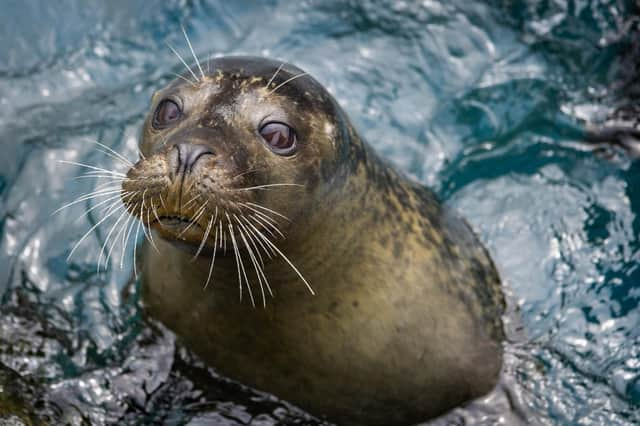Record number of seal pups born on the shores of the river Tees


The Industry Nature Conservation Association (INCA) has been running a monitoring programme for 30 years.
Set up to monitor the impact of seal distemper virus which was devastating h arbour seal numbers in the late 1980s, in the first five years no more than one pup was born a year.
Advertisement
Hide AdAdvertisement
Hide AdEach died and post mortem examinations revealed excessive levels of chemicals in their tissues.
Since then numbers of harbour seal pups have risen by one or two each year and almost all now survive until they are weaned.
This year has seen figures shoot up to 36, from 26 last year – the biggest annual increase ever recorded.
As pups swim almost immediately after birth, seals can breed on sheltered tidal areas where banks allow access to deep water. Seals can travel long distances to find food but often return to favourite sites.
Advertisement
Hide AdAdvertisement
Hide AdMonitoring is done by a team of dedicated volunteers, who between them count the seals for two hours, every day for two months over the summer. More than 200 seals now call Teesside home.
Linda Watson, who has been monitoring the seals for 20 years, said: "Over the years I have learnt so much about them, from the colours and characteristics of individual seals, to being able to watch females giving birth. It is fantastic to watch these beautiful creatures go about their daily life.”
Unravelling the factors behind the success of the Teeside seals will require a lot more investigation.
A four-year study by researchers at Teesside University will examine seal faeces and analyse its DNA content to see how the local population is related and also examine their diet and internal parasites.
Advertisement
Hide AdAdvertisement
Hide AdLast week Tees Valley Mayor Ben Houchen vowed that “not a single gram” of material dredged to create the £90m South Bank Quay will be dumped in the river or sea.
Fishermen suspect previous dredging was responsible for the mass deaths of shellfish, and say catches are still well down.
However government scientists insist the most likely cause was a harmful algal bloom.
